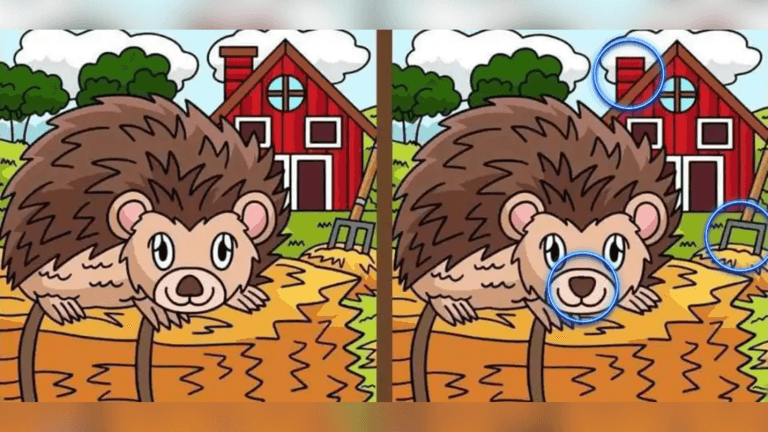An optical illusion just hit the internet world, and it’s got folks scrambling to find three tiny differences in a duo of images that look almost the same all under 11 seconds. This puzzle isn’t the kind you might breeze through – it’s a legit challenge to your eye power and quick thinking. It’s blasting across the web drawing in crowds by the thousands. As more people give it a go, it seems like the super sharp-eyed can snatch victory before time runs out.
Unpacking the Puzzle

You’ve got two pictures next to each other that look the same when you first see them but wait for it, they’re not! There’s three small changes in there that you gotta spot fast. Catching them isn’t easy—you need to be sharp and spot things quick. The way they hide those changes is pretty slick, and it’s all about seeing if you’re patient and have a good eye.
The Importance of 11 Seconds
, having 11 seconds to complete the task cranks up the thrill. They picked this exact span because it’s just right to keep your brain on its toes but still tough enough in terms of the puzzle. You get just enough moments to have a shot at it, yet it’s brief enough for winning to seem like a big deal. The tick-tock of that timer turns what would be a chill find-the-odd-one-out game into a heart-pumping dash.
The Way It Strengthens Your Mind
When you dive into optical illusions like the one right here, your brain gets a serious workout. By zoning in hard on spotting the differences, you fire up a bunch of regions in your head that handle seeing stuff and figuring out patterns. This brain gym session beefs up the links between your neurons and pumps up your thinking powers. Stick to challenges like these often, and you’ll get better at catching small details in your daily grind. Plus, your skill to remember what you see will get a sweet boost.
Hacks to Nail It
Doing well in this puzzle means you need a smart plan. First up, take a fast look at both pictures to grab the big picture. Next, check out bits of the images one by one. Look real close at spots where stuff often changes, like the sides, hues, and sizes. Keep your cool even if the clock’s ticking. Freaking out could mean you skip the easy-to-spot changes. Lots of folks who ace this say chilling out but keeping on your toes is the way to go.
The Scientific Stuff Behind the Puzzle
Our brains do a cool job at handling what we see when we’re trying to spot the differences between two pictures that look pretty much the same. This kind of brain teaser turns on the visual cortex and gets our working memory in gear, which kind of makes our neurons do a complicated dance of noticing stuff and figuring it out. Researchers have noticed this sort of thing gives our brains a bit of a workout helping us get better at handling what we see . That makes us sharper in all sorts of ways.
The Answer’s Out There
We’re not gonna ruin where the differences are in those pictures, but they’re about small tweaks in color where things are, or how big they are. We make these tweaks tricky on purpose but not too hard to spot before the clock runs out. Nailing all three changes in less than 11 seconds is a real high five to your eyeballing talents and makes you feel pretty proud.

More Than Just Fun
Don’t just see this optical illusion as a way to kill time. It’s legit a brain booster. If you keep messing with stuff like this, you’ll start noticing things super quick get better at zeroing in on details, and speed up how fast you process what you see. These perks can seriously up your game when you’re trying to nail stuff at work or just getting through your day without missing a beat.





